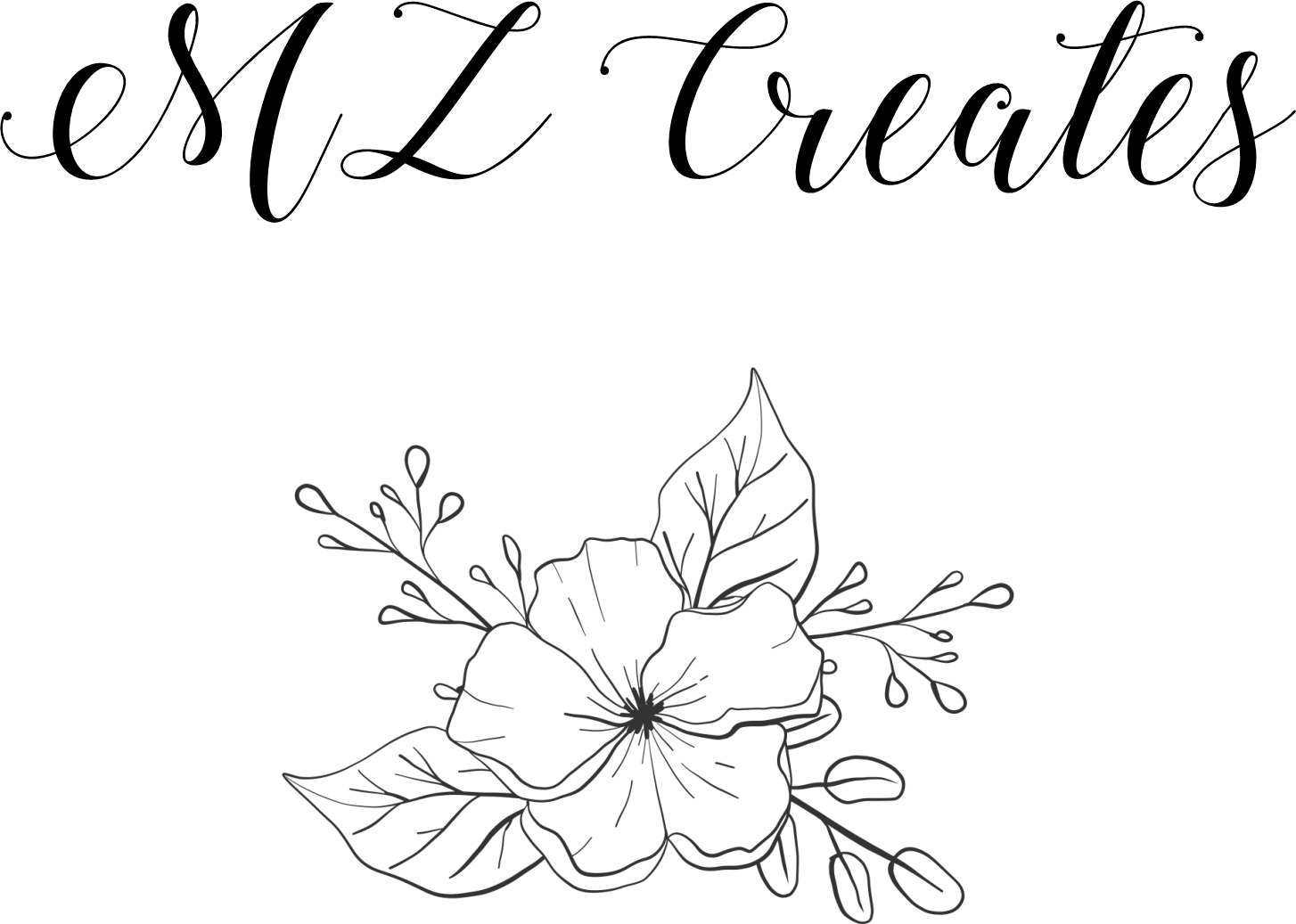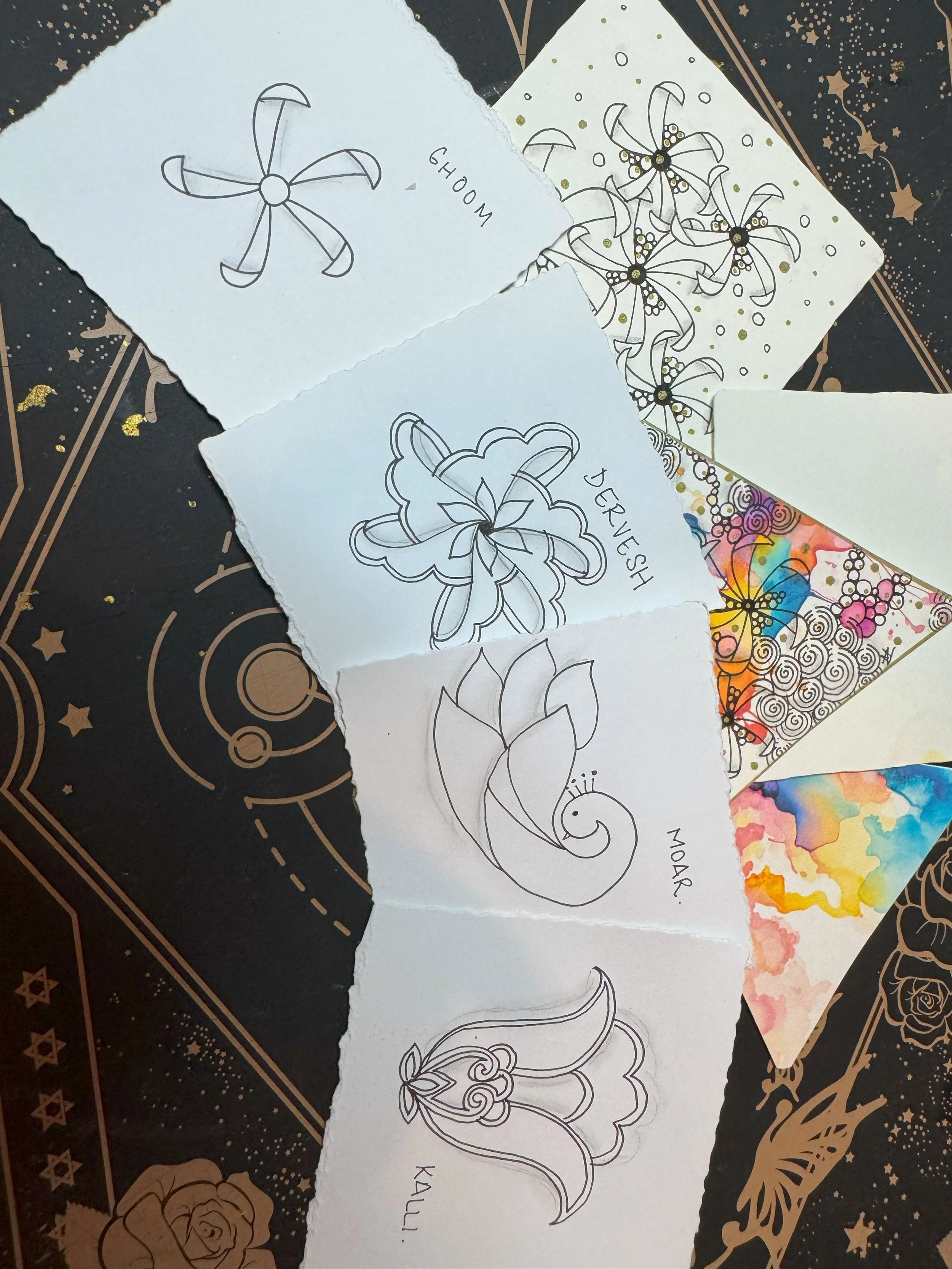Getting in the Zone with Zentangle: 4 New Tangles to Try Today
There’s something meditative about drawing slow, deliberate lines. The Zentangle® Method turns that instinct into an intentional, calming practice. Whether you’ve been tangling for years or you’re brand new to the world of structured patterns, this post is for you.
Today, I’m sharing four brand new tangles I’ve created, each with a step-by-step guide (aka “step-outs”) so you can try them yourself. They’re beginner-friendly, fun to explore, and versatile enough to work into your favorite tiles or sketchbook spreads.
Let’s start with a quick overview of what Zentangle is—and why it’s become such a go-to creative outlet for so many.
What is Zentangle?
Zentangle is a method of drawing that focuses on creating structured patterns through slow, mindful strokes. It’s not about perfection or making art that’s “good.” It’s about process. You draw one line at a time and let the patterns emerge. The result is often more beautiful than expected.
Here’s what sets the Zentangle Method apart:
It’s simple. You don’t need to be know anything about drawing before you start tangling.
It’s relaxing. Repetition calms the nervous system and eases anxiety.
It’s accessible. The tools needed are super simple, a micron 01 pen, ‘tiles’ made from watercolor paper and a pencil. If you’re just starting out, any pen and paper will do.
It’s forgiving. There are no mistakes—only “elegant variations.”
And perhaps most importantly: it’s enjoyable. There's a sense of flow and focus that’s hard to find elsewhere.
Tools You’ll Need
To try the tangles I’m sharing below, all you need is:
A pen (Micron 01, or if you don’t have that handy grab any fine gel pen, or even a ballpoint—whatever you like)
A piece of watercolor paper measuring 3.5 inches by 3.5 inches, or a Zentangle tile or just use a sketch book.
Optional: pencil for shading and a tortillon or cotton swab to blend
That’s it. Let’s tangle.
Four New Tangles: Step-Outs & Ideas
Here are four original tangles I’ve created, each with a visual step-out included in this post. These tangles are designed to be flexible—great as fillers, borders, or focal points in your tile. You can use them as-is or blend them into your own style.
1. Tangle Name: Ghoom
This tangle starts with a loose flower shape, that looks like a windmill dancing in the wind.
2. Tangle Name: Moar
Inspired by swans and their elegant curves, this one would look gorgeous as a focal point on a tile.
3. Tangle Name: Dervesh
Inspired by the dancing whirling dervish found in many sufi shrines, this tangle is one that is super close to my heart.
4. Tangle Name: Kalli
This bold floral tangle is similar to what is found in many Mughal style paintings and frescoes. This is my version and a tribute to the beautiful art found in our monuments.
A Few Tips as You Try These
Slow down. Zentangle isn’t a race—enjoy each stroke.
Repeat with variation. Try rotating, mirroring, or combining tangles.
Use shading. A little pencil and blending brings your patterns to life.
Tangle outside the box. Use these on bookmarks, journal pages, envelopes, or even painted backgrounds.
Want More Tangles Like These?
If you enjoy the patterns I shared today, you’ll love my Zentangle books, packed with tangles, creative prompts, and step-outs to inspire your practice. Whether you’re looking to deepen your technique or just want fresh patterns to play with, these books are designed to be approachable, encouraging, and full of possibilities.
Each one includes tons of examples, tips, and creative twists to keep your tangling fresh.
Your Turn
Grab your pen and tile, and give these four tangles a try. I’d love to see how you use them—tag me or share your work using the hashtag #TangleWithMZ so I can celebrate your creativity.
Zentangle is all about showing up, taking a breath, and letting the pen guide you. Whether it’s for five minutes or an hour, let it be your time to focus, unwind, and create something totally your own.







